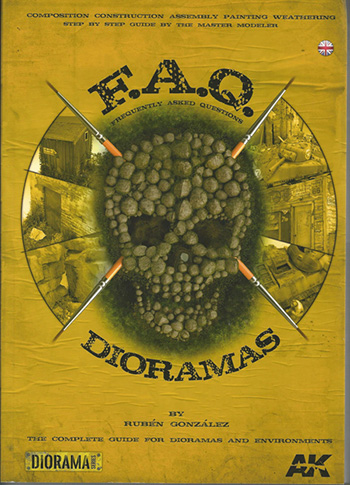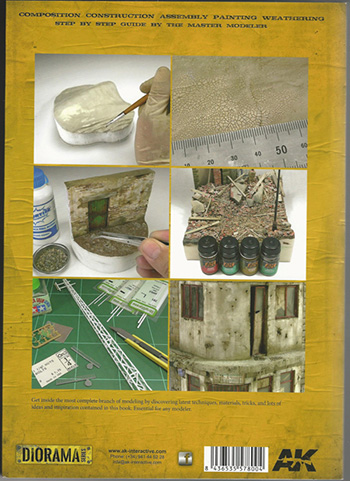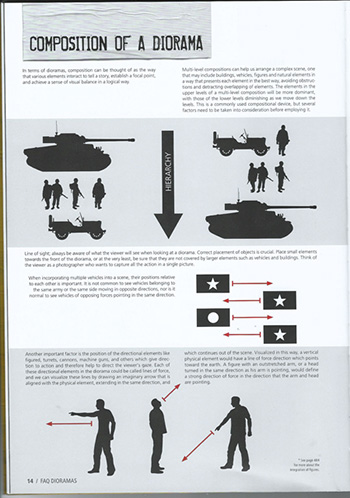

Published: AK Interactive
Author: Rubén González
ISBN: None yet allocated
Price around: £67.92 (US$ 88.54; €79.00; $118.75AUS; $119.62CAD) Based on Euro price.
Available in: English or Spanish.
Review by Mike Mendé (May 2017)

 No doubt many, if not most, of you have read the weathering series of magazines published by AK Interactive well, hold on to your seats because, here, at 560 pages, (and what feels like a couple of kilos) comes what AK describe as “Our best title ever!!!”. It’s described as the complete guide to building dioramas, vignettes and environments.
No doubt many, if not most, of you have read the weathering series of magazines published by AK Interactive well, hold on to your seats because, here, at 560 pages, (and what feels like a couple of kilos) comes what AK describe as “Our best title ever!!!”. It’s described as the complete guide to building dioramas, vignettes and environments.
Contents
The author starts off this profusely illustrated book with 3 introductory chapters on ‘Concepts – Bases & Displays’; ‘The Theory of Composition in 3D’ and ‘Techniques’. These pretty much pave the way to understanding his ideas on constructing a showpiece diorama.
There then follow 6 chapters on:
1. Bases
2. Ground & Terrain
3. Vegetation
4. Artificial Elements: (Inc. lampposts, signs, buildings and accessories such as doors, windows etc.)
5. Miscellaneous: (Through ground cover, posters, footprints to vending machines & may others
6. Figures: (Painting, masking and integration into the whole).
Chapter 7 takes us through the all the steps required for the assembly of a particular diorama and makes reference to the atmospheres created by the differences in the four seasons.
Chapter 8 gives us an insight into common mistakes made in shows and contests.
Chapter 9 is a gallery of all the finished work included in the book.
Finally, Chapter 10 is entitled ‘Conclusions’.
What is not immediately obvious is that the book covers the detailed construction of 12 of Rubén González’s dioramas, all but two on military subjects and it is those 12 that appear in Chapter 9. The period covered ranges from World War II, through Vietnam and up to current Middle East conflicts and items in the two non-military vignettes are easily transferrable to military backgrounds.
Set out clearly you will find detailed methods on constructing the backgrounds to just about any terrestrial conflict you can imagine. Groundwork such as grass, sand, water, trees, general vegetation, concrete roads and so on is set out with copious illustrations covering all four seasons in European, African, American, Asian and Middle Eastern locations.
Chapters 1 to 3 and 8 are of great assistance to those of us who have yet to summon up the courage to exhibit in shows and competitions and, also, those of us who want to understand why their hard work has yet to achieve the longed for accolades in competition.
Materials are obviously covered and, where appropriate, AK Interactive products are used but little, if any, time is spent discussing tools or the construction of the vehicles and figures which are shown displayed on the dioramas.
There are now many books available on the subject of dioramas such as the well received F.A.Q. on dioramas relatively recently produced by Andrea Press but none, I think, are as well thought out and comprehensive as this one. To quote from the publishers’ blurb “For sure a must-have for the modelling world.” It took a lot of heart searching for me to prise open my wallet and send off for this book but, without doubt, it was worth every penny.
Mike M.